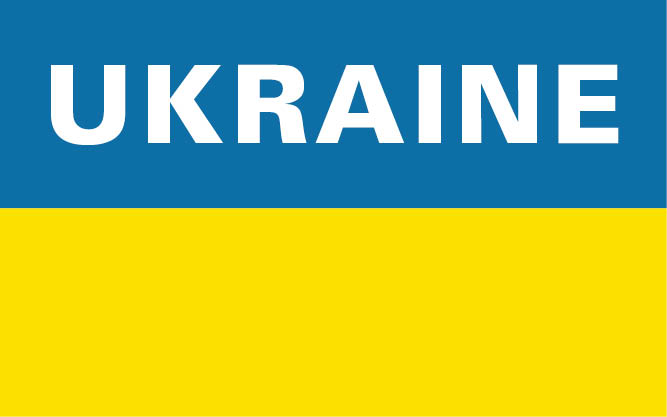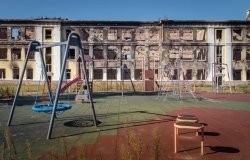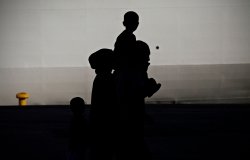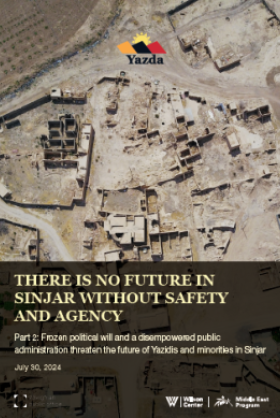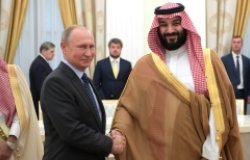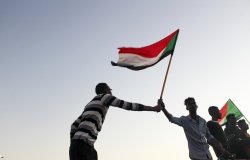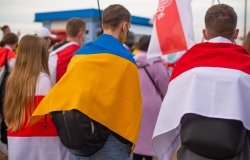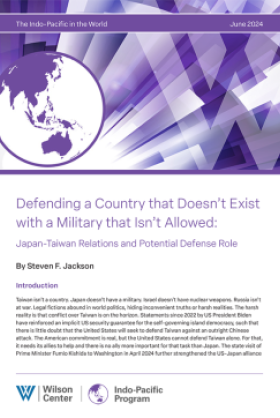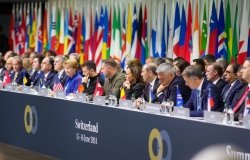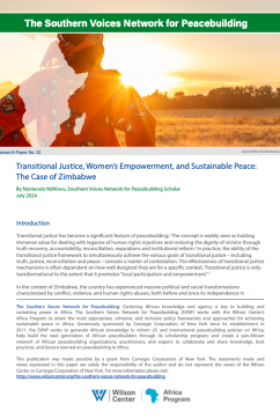A Year on, October 7 Reinforces Dualling Narratives Among Israelis and Palestinians
After the devastation of October 7, both Israelis and Palestinians see the Gaza conflict through the prisms of their own historical traumas. The resulting mutual invalidation serves to justify continued hostility and violence.
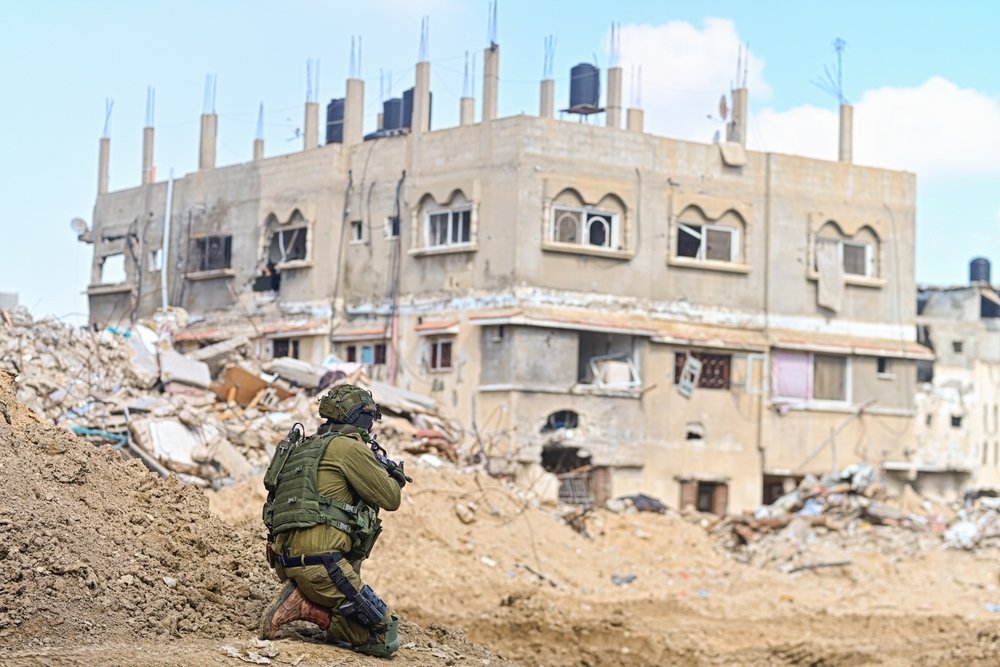
By Ran Zisovitch/Shutterstock
In the Israeli-Palestinian conflict, the past is rife with dualling narratives. The “battle of memories,” as the late Palestinian poet Mahmoud Darwish termed it, has fueled feelings of victimization and provides justification for ongoing violence and mutual distrust. Indeed, while primarily conceptualized as a battle over territory and self-determination, prior research, including by this author, has demonstrated that the interminable state of confrontation and violence has had a profound effect on both Palestinian and Israeli-Jewish collective memories and identities.
October 7, a date that has already become replete with divergent meanings, has proven no different, joining other key historical events that punctuate the almost eight-decade-old Israeli-Palestinian conflict and whose dichotomous interpretations reinforce exclusionary narratives and challenge progress toward peace.
The interminable state of confrontation and violence has had a profound effect on both Palestinian and Israeli-Jewish collective memories and identities.
October 7 and Its Aftermath
On 7 October 2023, following a breach of Israeli-Gaza security barrier, members of Hamas and other Palestinian armed groups carried out numerous coordinated attacks on residential communities, social events, and military bases in southern Israel. The attacks killed approximately 1,200 Israeli civilians and security personnel and wounded more than 3,300, marking the deadliest day for world Jewry since the Holocaust.
At least 252 Israelis and foreigners, among them women, children, and elderly people, were taken hostage by Hamas and other armed groups, including Palestinian Islamic Jihad. During a temporary seven-day ceasefire in late November, Hamas released 105 hostages in exchange for 240 Palestinian prisoners held by Israel. Just this September, during a Knesset panel, Israeli Prime Minister Benjamin Netanyahu said that only half of the remaining 101 hostages are believed to be alive; their fate is tied up in ongoing ceasefire discussions between Hamas and Israel that have remained unsuccessful to date.
Israel responded to the Hamas attack by launching a combined air and ground offensive in Gaza aimed at destroying Hamas and freeing the hostages. Its military response, the fifth Gaza offensive since 2008, is considered one of most destructive military campaigns since the Second World War and the deadliest in the history of the Israeli-Palestinian conflict. Israel’s military campaign has, according to the Gaza health ministry, claimed more than 41,000 Palestinian lives, the majority women and children, and wounded over 95,000 individuals. It has also reduced the coastal strip to ruins and displaced almost the entire population.
According to UN estimates, 9 out of 10 Gazans, 1.9 million individuals, have been internally displaced at least once since October 7, with many lacking access to adequate shelter and facing “unbearable” living conditions. Hunger and disease stalk Gaza; damaged and inadequate waste and sewage infrastructure has led the coastal enclave to become an incubator for communicable diseases, including the once eradicated polio. As of September, 96% of Gazans, almost 2 million people, face acute levels of food insecurity while almost 500,000 Gazans are in extreme levels of hunger, or in less technical terms, “really starving.”
Prisms of trauma
Almost a year after October 7, the Hamas attack and Israel’s ensuing military campaign in Gaza, which has claimed the lives of some 350 Israel Defense Forces soldiers to date, have already proven to encompass vastly different interpretations among Israeli Jews and Palestinians. Pre-established historic prisms central to Palestinian and Israeli-Jewish collective memory have provided interpretative frameworks for the suffering experienced.
Pre-established historic prisms central to Palestinian and Israeli-Jewish collective memory have provided interpretative frameworks for the suffering experienced.
In Gaza, where refugees from the 1948 War and their descendants make up over 80% of the population, the post-October 7 uprooting and dispossession is viewed by many Palestinians as part of an ongoing Nakba – the Arabic word for catastrophe that refers to the mass Palestinian displacement that occurred during the 1948 War. The term also constitutes an analogy for contemporary Palestinian experiences under Israeli control.
Meanwhile, Prime Minister Netanyahu—joined by other prominent Israelis––was quick to compare Hamas’ attack and the group’s actions on October 7, which included sexual and gender-based violence and mistreatment of bodies, to “Nazi crimes in the Holocaust.” Israel’s ensuing war on Hamas, in line with this historical framework, became a just “all-out battle for their very existence” against “the new Nazis.”
According to a poll published in May, 54% of Israeli Jews believed comparisons between the Holocaust and the events of October 7 to be valid. A recent survey conducted by the Palestinian Center for Policy and Survey Research (PCPSR) in Ramallah and the International Program in Conflict Resolution and Mediation at Tel Aviv University found that 66% of Israeli Jews believe that genocidal aspirations drove the October 7 attack. Palestinians, according to the same survey, ascribe similar objectives to Israeli war aims in Gaza; 61% of respondents in the Palestinian Territories believe that Israel aims to “commit genocide.”
Indeed, as the survey showed, on questions of victimhood and ascribed culpability, Palestinians and Israeli Jews show an “undeniable symmetry of responses,” as pollster Dahlia Scheindlin termed it. Over 80% of both Palestinians and Israeli Jews believe that their own victimization is “the worst compared to other people that suffered from persecution and injustice.” Feelings of victimization provide justification for violence, past and present, and dehumanization. According to the survey, 80% of Palestinians believe that Palestinian suffering in Gaza justified Hamas’ acts on October 7; 84% of Israeli Jews believe that the Hamas attack justifies current Israeli actions in the Gaza Strip, although the extent of objective internalization of the October 7 events and Israel’s ensuing military response is unclear.
Given these results, it is hardly surprising that surveyed levels of mutual dehumanization and distrust were high. When asked to provide a score of the other’s humanity, Israeli Jews and Palestinians gave the other side average scores of 14/100 and 6/100, respectively, while both ascribing high marks to themselves. 51% of Israeli Jews gave Palestinians a score of zero, and 71% of Palestinians gave the same score to Israelis. Only 10% of Israeli Jews and 6% of Palestinians deemed it possible to trust the other side.
Outlooks on the future
Israeli and Palestinian perspectives on the past and present impact outlooks on the future, including the near-term viability of any political solution to the ongoing conflict. Although survey research is dependent on context (for example, Palestinian support for Hamas tends to surge following a violent confrontation with Israel; similar trends can be seen in the aftermath of October 7), recent polls show that Palestinians and Israelis broadly oppose the internationally favored two-state solution, likely based on assessments of the feasibility of such an outcome.
Among Israeli Jews, support for the establishment of a Palestinian state stands at just 21%–the lowest it has been since 1987, while almost 70% oppose the two-state solution. At the same time, a June survey by Pew found that only 19% of Israeli Jews believe that peaceful coexistence with an independent Palestinian state is plausible–the lowest number since polling on this question began in 2013. During that same month, a PCPSR poll found that 32% of Palestinians supported the creation of a Palestinian state (65% opposed this outcome); a majority of respondents (54%) believed that “armed struggle,” rather than negotiations or peaceful popular resistance, was the best means of achieving independent statehood.
Perceived notions of unique and superior victimhood, meanwhile, can, as the above polling shows, both rationalize further violence and minimize, if not deny, the other’s experience of suffering.
It is unlikely that these competing and diverging Jewish-Israeli and Palestinian narratives will be reconciled in the near term. Zero-sum interpretations of the perfidy of one’s opponent, including their past actions, provide tales of empowerment in times of conflict that demonstrate the validity of today’s cause. Perceived notions of unique and superior victimhood, meanwhile, can, as the above polling shows, both rationalize further violence and minimize, if not deny, the other’s experience of suffering. October 7, in this way, will continue to allow Israeli Jews and Palestinians to nurture their own national trauma while drowning out that of the other.
The views expressed in these articles are those of the author and do not reflect an official position of the Wilson Center.
About the Author


Middle East Program
The Wilson Center’s Middle East Program serves as a crucial resource for the policymaking community and beyond, providing analyses and research that helps inform US foreign policymaking, stimulates public debate, and expands knowledge about issues in the wider Middle East and North Africa (MENA) region. Read more
